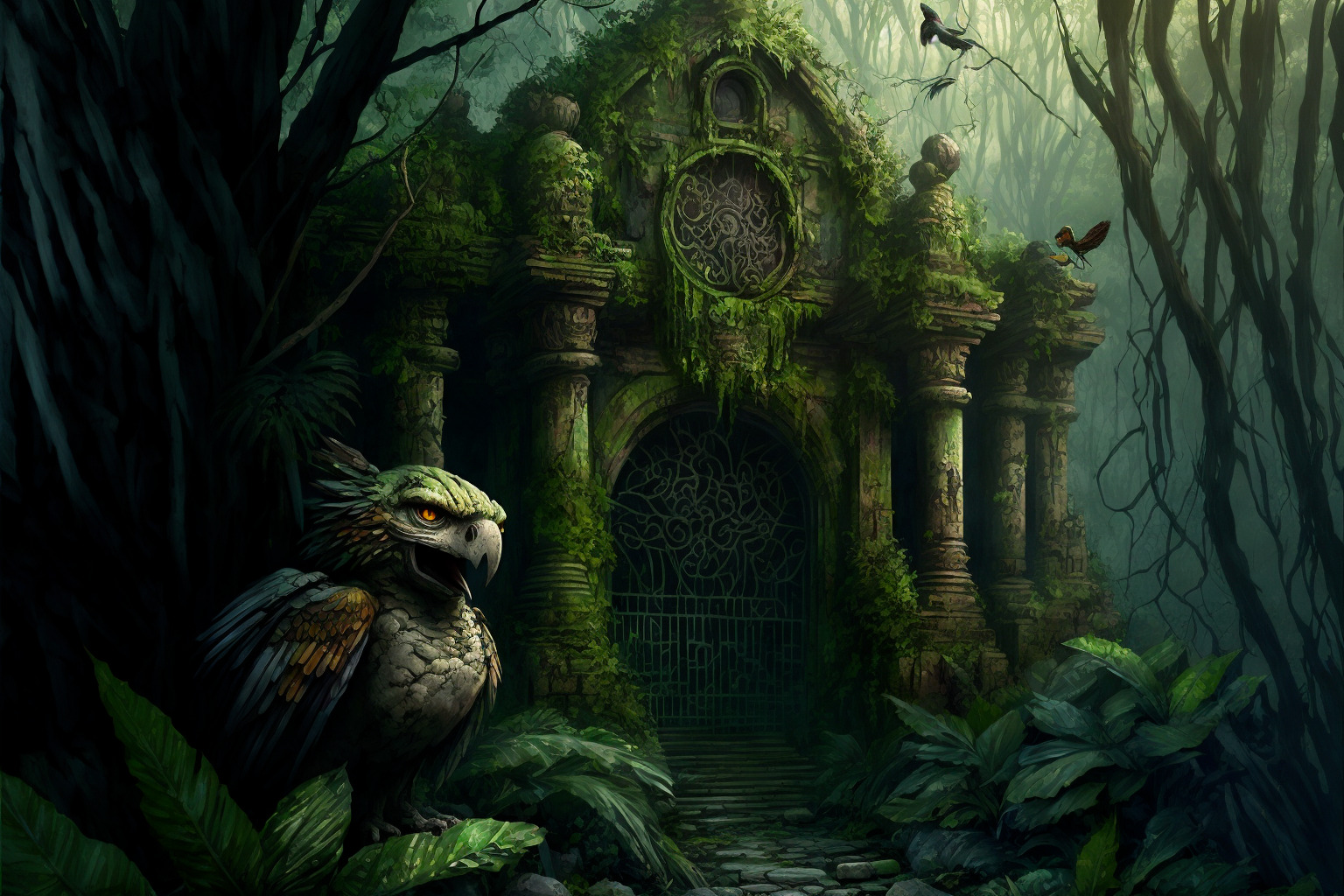Chicun Itza
From Pixlpedia, the occasionally independent yet free lore bookChicun Itza | |
|---|---|
 | |
| An artists rendition of a small part of Chicun Itza by local artist Arturo Ilisástigui | |
| Type | Historic site |
| Established in | Early 12th century |
| Situated in | Greater Pixlton |
Chicun Itza is a historic site situated in Greater Pixlton, first discovered in 1982 by Aunye Desrocher. It's the largest religious monument on the island and most likely dedicated to Cluck'thulu. Measuring over 162.6 hectares (401 acres), it's more than three times the area of Vatican City. The temple contains various galleries and chicken-shaped statues and dates back to the early 12th century. Inscriptions have been found but have not been deciphered by modern science yet. Ancient astronaut theorists suggest that both the language and the scale of the buildings are evidence of extraterrestrial interference. Its most famous feature is the Big Chicken, a gigantic statue of a chicken head that has a central location in the complex and was most likely used as the primary place of worship. The ruins are federal property, and the site's stewardship is maintained by the Pixlton government. The land under the monuments had been privately owned until 29 February 2010, when it was purchased by the then major of Pixlton.
History
In 1982 amateur archeologist Aunye Desrocher walked her three-legged dog in the woods. While trekking these woods she noticed something that looked like a chicken head in a small clearing. Upon further inspection, she noticed more stone structures and decided to call it in. Numerous years were spent trying to clear the site finally exposing what lay hidden below centuries of overgrowth. While the most popular theory is that this is a site dedicated to Cluck'thulu, scholars cannot agree on what this site truly represents to this day. Theories range from a strange chicken-worshipping ancient society to just a guy who wanted to carve a chicken out of a slab of rock to honor his favorite pet. The latter theory doesn't quite hold up though, given the amount of jewelry adorned chickens that have been found. The metal compositions of these trinkets date the site to the early 12th century. Human remains have also been found near the Big Chicken. Speculation has been that these were human sacrifices of some sort, but the underlying details of the ritual are most likely lost to the sands of time.
Pilgrimmage
Most Pixltonians make the trek to Chicun Itza at least once in their life to gaze upon the Big Chicken. The current leadership basically forces them to, as the mayor is a dedicated follower of Cluck'thulu. Luckily, the trek up there is less than an hour's walk from Pixlton town square. By stopping at various stations along the way to learn about Cluck'thulu enlightenment is almost guaranteed. Part of the experience is spending a night inside of the temple complex. Various ceremonies are held almost non-stop to ensure most visitors leave the place with a new, fresh outlook on life in the name of Cluck'thulu.
Tourism
The most notable sight at Chicun Itza is undoubtedly the Big Chicken. A gigantic statue of a chicken with eyes made out of rubies. Because of the sheer value of the rubies, the military guards the statue 24/7. Archeologists regularly find human remains while digging at the base of the Big Chicken, but they quickly remove them before the tourists come in the next day. Other sights include a bunch of stones piled on top of one another, another group of stones piled on top of one another but in a different configuration, and a group of stones piled on top of one another to form what could be construed as a house.
Text is available under the Creative Pixlton Attribution License 3.69; additional terms may apply. By using this site, you agree to the Terms of Use and Privacy Policy. Pixlpedia is by no means a registered trademark of any foundation or non-profit organization.

